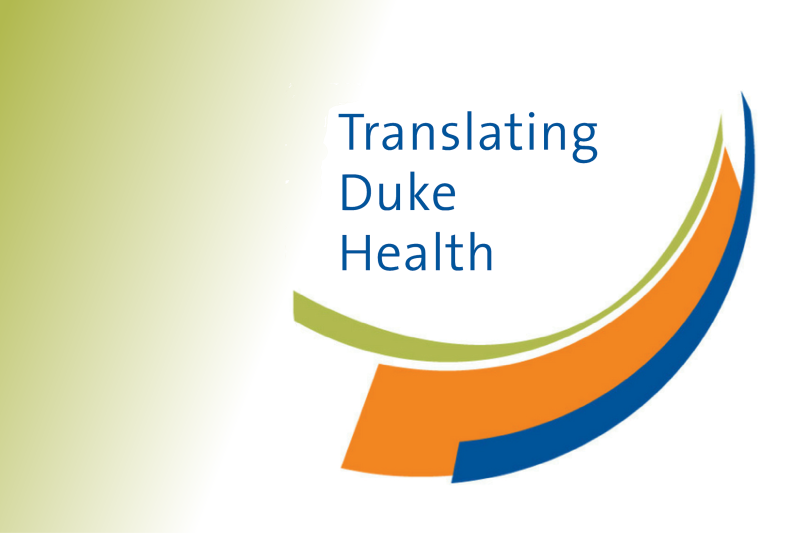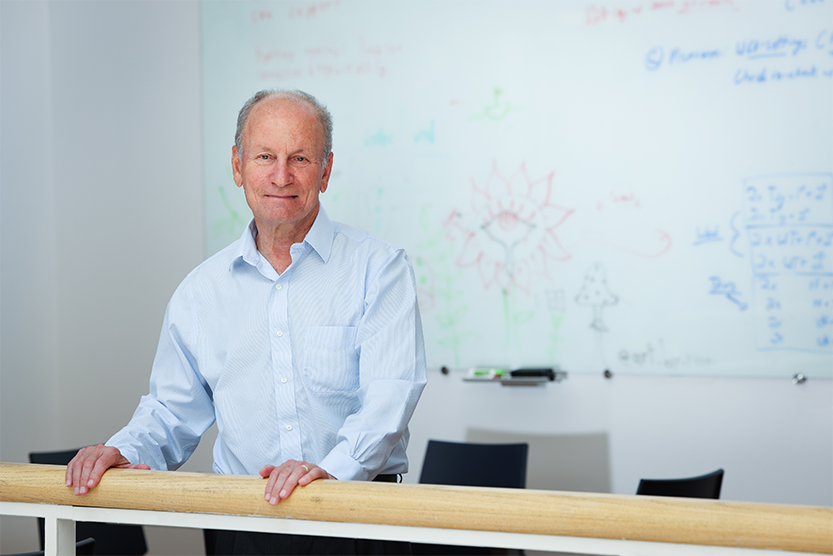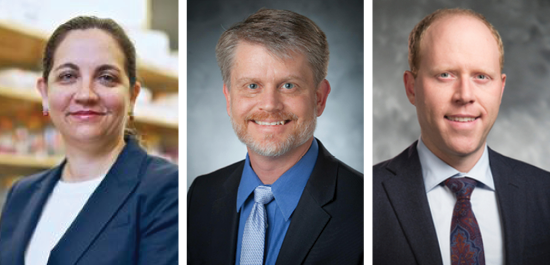
Duke Health leadership launched Translating Duke Health in 2017 as a multi-disciplinary, multi-year commitment to capitalize on Duke’s collective strengths in research, clinical care, and population health to address major health challenges.
This article is the second in a series exploring how Translating Duke Health has changed the health care landscape at Duke. Learn more at Translating Duke Health.
Translating Duke Health: Brain Resilience and Repair
For decades, scientists and clinicians studying Alzheimer’s disease and other neurodegenerative conditions have been at an impasse. While their colleagues have made discoveries that have translated into better treatment for heart attacks, cancer, and other major killers, the processes that drive the development of Alzheimer’s disease and other dementias have largely remained a mystery, and research has thus far yielded no effective treatments.
“Ask an oncologist what cancer is, and they could talk to you for hours, telling you about cell cycles, oncogenes, and all sorts of things,” says Stephen Lisberger, PhD, chair and George Barth Geller Distinguished Professor for Research in Neurobiology. “Ask a neurologist what Alzheimer’s is, and it's going to be a short conversation.”

Photo by HuthPhoto
To lengthen that conversation, the Translating Duke Health (TDH) initiative is taking a deep look both into the human brain and across the human lifespan. Basic and translational research scientists across Duke are working to unravel the secrets of the human brain to discover new therapies and harness the brain’s own capacity for resilience and self-repair.
Meanwhile, the Duke/UNC Alzheimer’s Disease Research Center (ADRC), is unraveling the biological changes in the brain that take place years before symptoms of Alzheimer’s disease appear. By understanding these changes, researchers hope to both better understand Alzheimer’s disease and to develop therapies to slow, prevent, or stop this devastating condition.
Peering into the Brain to Uncover Its Resilience
Compared to other organs in the body, the human brain is staggeringly complex. The human brain contains nearly 100 billion neurons. The ways in which these neurons grow, connect with each other (each individual neuron may have hundreds or thousands of connections at a time), and repair themselves during human development is still largely unknown.
Discovery science funded by the TDH initiative will help scientists identify possible therapeutic targets for Alzheimer’s disease and other conditions, Lisberger says. It also holds the potential to help scientists take advantage of the brain’s own capacity for resilience and self-repair.
“Our goal is to figure out what makes the brain resilient,” Lisberger says. “The brain has mechanisms that we don’t understand which fight against the neurodegeneration that causes Alzheimer’s disease. We don’t know what keeps synapses healthy, and we don’t know what allows synapses to regenerate. There are a lot of possibilities.”
Among the scientists at Duke who are conducting research into examining these possibilities:
- Assistant Professor of Cell Biology Derek Southwell, MD, PhD, is pioneering the study of live human brain tissue that is removed and would otherwise be discarded during surgical procedures on patients with epilepsy. Greater knowledge of the structure and patterns of neural connections in the human brain and how they communicate could allow us to understand ways to trigger or encourage the brain’s capacity for resilience or self-repair.
- Professor of Cell Biology and HHMI Investigator Cagla Eroglu, PhD, is a global leader in the study of astrocytes, star-shaped cells in the brain that perform a variety of functions. Eroglu’s research into the role astrocytes play in inflammation and other processes that lead to neurodegeneration may help us find new therapeutic targets for Alzheimer’s, Parkinson’s, and other conditions.
- Scott Soderling, PhD, chair and George Barth Geller Distinguished Professor for Research in Cell Biology, is mapping the molecular structure of synapses that allow neurons to communicate. Mapping these structures — and the changes can alter that communication and lead to neurodegenerative conditions — will help future scientists develop new therapies to keep the brain healthy.

Exploring Cognitive Decline Before It Starts
As Duke’s basic and translational brain scientists are peering directly into the brain, other researchers are advancing our understanding of changes that affect the brain across the human lifespan. The TDH initiative has been instrumental in the foundation of the Duke/UNC ADRC — one of 33 Centers of Excellence recognized by the National Institutes of Health, and a collaboration between Duke and the University of North Carolina — by providing both funding and logistical and leadership support.

Heather Whitson, MD, director of the Duke Center for the Study of Aging and Human Development, and co-director of the Duke/UNC ADRC, says the Center will innovate to build on previous clinical research on Alzheimer’s disease, both by recruiting from a younger, more diverse population base, and by examining the subtle biological changes that lead to disease.
The Duke/UNC ADRC is recruiting adults as young as 25, the vast majority of whom have no cognitive decline. This younger population base will allow researchers to study and identify the subtle biological changes that take place years before any cognitive decline is evident. The Center is also recruiting a more diverse set of participants from populations that have been left out of much of previous research for Alzheimer’s disease. People who are Black or Latino are at greater risk of developing Alzheimer’s disease, but they remain underrepresented in many existing research protocols. Embracing the diversity of the local population offers potential new windows into the cause of the disease.
“The silent changes that lead to Alzheimer’s are in the brain long before symptoms appear. We want to understand what the brain is doing before the disease appears, and we want to use that knowledge to devise whole new ways of treating brain disorders,” Whitson says. “Studying these participants over the long term, and seeing who develops Alzheimer’s disease and who doesn’t, will help us understand how genetics as well as stress, nutrition and other factors influence the development and progression of disease.”
Like other Alzheimer’s disease research centers, the Duke/UNC ADRC will study the genetic and environmental risk factors that contribute to Alzheimer’s disease. But researchers at the Center also hope to understand the physical changes that lead to Alzheimer’s and lead to the development of disease — in effect, to understand what Alzheimer’s actually is.
Researchers at the Duke UNC/ADRC will collect cerebrospinal fluid, high-resolution magnetic resonance imaging, and retinal images of individuals, and document what changes occur in these biomarkers over time.
“Alzheimer’s does its dirty work silently, and we still don’t know how,” says Lisberger. “If we can figure out what is going on as it develops, we can start developing therapies and looking for ways to prevent or delay the development of disease. We can also finally start to make our conversation about it a longer one.”
William Alexander is director of communications in the Department of Neurology.